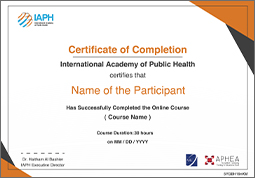Zoonotic diseases
Description
Zoonotic diseases are caused by a range of disease pathogens such as viruses, bacteria, fungi, and parasites. Of 1,415 pathogens known to infect humans, 61% are zoonotic. Up to three-quarters of emerging infectious diseases are zoonotic in origin, with zoonotic disease posing a considerable and increasing threat to global health. The list of zoonotic diseases includes: Brucellosis, rabies, bovine tuberculosis, anthrax, hydatid diseases, trypansomiasis, leishmaniasis, cysticercosis, and taeniasis. Some emerging diseases are also part of the list: influenza, SARS and MERS-CoV/ coronavirus. The control of zoonotic diseases needs close inter-relationship between animal and human health.
Learning Outcomes
- Identify zoonotic diseases of public health importance
- List the main clinical features of each disease and state case definition where appropriate
- List the most important indicating features for the presence of the disease among animals
- Identify the disease specific agent, reservoir, and susceptible human host
- Describe the mode of transmission from animal to human
- Describe the life cycle of the disease
- Estimate the disease burden and analyze its determinants
- List the recommended control methods (in both human and animal) and assess the possibility of elimination or eradication
- Bacterial zoonotic: brucellosis, tuberculosis and anthrax
- Viral zoonotic: rabies, influenza, SARS, and Coronavirus
- Cysticercosis, taeniasis, and hydatid disease
- Emerging infections: SARS, MERS-CoV/Coronavirus, and influenza

Duration:
30 Learning Hours
Accredited By:


Certificate

Are you interested in the course?
Get notified once the course is open by clicking on
Zoonotic diseases
Thank you for registering your interest! We appreciate your enthusiasm for this course. As soon as it becomes available, we will reach out to you with all the details. Stay tuned!